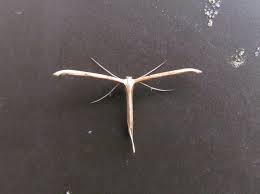I thought I’d give reviewing stuff and things another go. My initial thoughts on reviewing items was not to limit myself to brand new stuff that’s just come out, to be honest I can’t afford to buy new books when they come out, and secondly I thought it’d be nice to review older books to see if they stack up now, or they need updating, and just to be different!

A couple of years ago I had a regular task of surveying butterflies at the Dove Stone reserve, I volunteered my time once a week from April to September to regularly walk a set route (or transect) and identify and count all the butterflies I see a set distance away (I talk about this in my 4th ever post in 2013!). This was absolutely brilliant and taught me a lot about both butterflies and survey techniques. So I’ve now got an interest in butterflies.
This week I acquired a copy of the Collins Butterfly Guide: The Most Complete Guide to the Butterflies of Britain and Europe by Tom Tolman and Richard Lewington and published in 2009 (currently priced £15.90 from Amazon UK). This is one of the ‘black’ Collins guides. I now own four of them, this one, the Fungi Guide, the Tree Guide, and the birders’ bible: Bird Guide. They all have one thing in common, they are comprehensive, they don’t shy away from the details. However they all seem to be different in approach.
The Collins Bird Guide and the Fungi guide are pretty accessible, the Bird Guide in particular. The Tree guide is less so, it is pretty confusing, especially when you are trying to find native trees amongst reams and reams of obscure ornamental non-natives which inhabit the book. But it is readable.
Which brings me to my subject, the Collins Butterfly Guide. I’ll give you this description of a common butterfly, the Green-veined White.
“First Brood: ups veins lined greyish; unh yellow, veins suffused greenish: male upf apical black scaling on veins variable, sometimes vestigial; spot in s3 variable, sometimes absent: female ups and uns black markings better developed, with additional spot in s1b and s5 upf.” and it continues..
I’m pretty familiar with some technical language by now but this is a step too far. There is a glossary of abbreviations towards the start of the book and another fuller glossary towards the back to help decipher the text but you need to memorise it pretty well to use the guide efficiently. There are very roughly 1000 species described in this manner, some more briefly than others. It seems to me that the authors have set out to make the guide as incomprehensible to the casual reader as possible. Even fairly basic and common terms have been omitted, for example the familiar butterfly stages that everyone knows including small children: Egg, Caterpillar, Chrysalis, and Adult/Butterfly have been replaced with Ovum, Larva, Pupa, and Imago, which whilst technically correct could prove another barrier to a casual reader.
On top of this overly technical and abbreviation obsessed text comes an assumed knowledge that the reader has an intimate knowledge of botanical scientific names. Let’s go back to the Green-veined White, the guide describes it’s host plants (the plants which the caterpillars feed on) as thus:
“Brassicaceae, including:- Cardamine pratensis; C. amara; C. palustris, Nasturtium officinale, Lepidium heterophyllum; Lunaria rediviva;“ and again it continues..
Of all those Scintific names I only recognise the family name Nasturtium. There is no English plant names mentioned, which is odd as the book is written in English. (Scientific names are universal no matter what language, a Parus major is universal but a Great Tit in English, a Koolmees in Dutch etc.). Maybe I’m displaying my own botanical ignorance but then again I’m trying to read a book marketed to a general readership; I’ve seen this book for sale in various Waterstones branches as well as in my local library.
Now to the good bits. The accompanying drawing of the butterflies are superb as you would expect from Richard Lewington, with all butterlies drawn with wings spread and wings folded up as they would at rest, maybe one minor criticism is there is no illustrations of caterpillars but I suppose space had to be saved somewhere! The depth is astonishing, as I said above there are very roughly 1000 butterflies described and illustrated from throughout Europe, you won’t get all this in any other generalist book.
Overall I wouldn’t recommend the Collins Butterfly Guide however. The language of the text is far too technical and is as a result pretty off putting; I would suggest that future editions tone the technical stuff down a bit! If you were looking for a butterfly guide to British and Irish moths I would recommend the Pocket Guide to Butterflies of Great Britain and Ireland published by British Wildlife Publishing (£9 from Amazon UK), this again has great illustrations by it’s author Richard Lewington but it also has a very readable accompanying text. The various life-cycles such as egg caterpillar and chrysalis are also illustrated too. This book just focuses on butterflies found in the UK and Ireland so you don’t have to sift through 101 different European species of Grayling to get to your potential British butterfly. I could possibly suggest the Collins Guide to anyone touring Europe, it would just about fit nicely into a backpack for instance, it’s definitely not a coffee table book, just swat up on the abbreviations and the glossary beforehand! But if you are going to a specific country I’d probably try and source a country specific guide.
Thanks for reading this far!!
PS: Thanks to HIHO for adding me to their list of great-uk-bloggers on twitter! I’m humbled!

